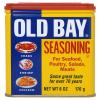-
Welcome to the eG Forums, a service of the eGullet Society for Culinary Arts & Letters. The Society is a 501(c)3 not-for-profit organization dedicated to the advancement of the culinary arts. These advertising-free forums are provided free of charge through donations from Society members. Anyone may read the forums, but to post you must create a free account.
Garlic in Olive Oil Safety
-
Similar Content
-
- 2 replies
- 443 views
-
Garlic Presses 1 2 3 4
By insalata_pazza,
- 96 replies
- 8,339 views
-
- 4 replies
- 1,502 views
-
Pickled Garlic
By lindag,
- 6 replies
- 486 views
-
Garlic Confit
By lindag,
- 15 replies
- 2,490 views
-
-
Recently Browsing 0 members
- No registered users viewing this page.






Recommended Posts